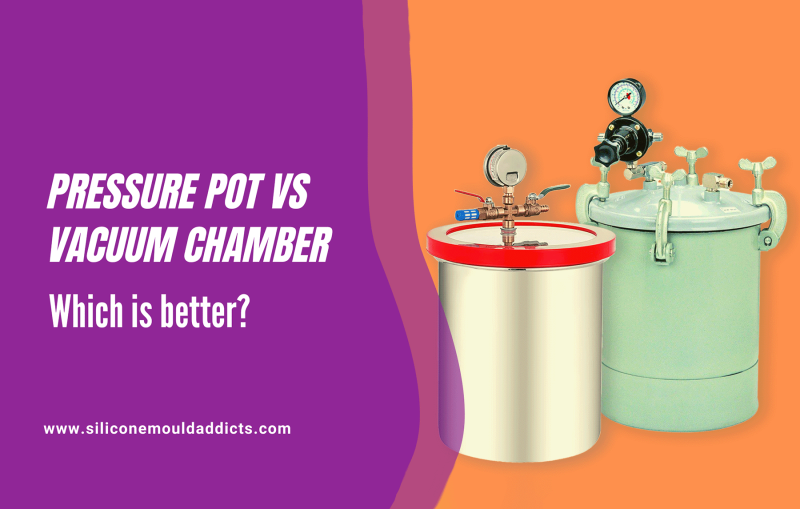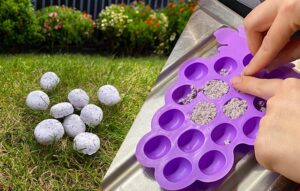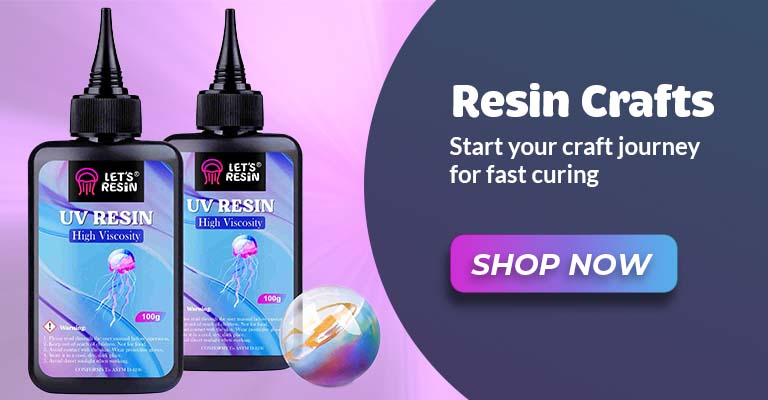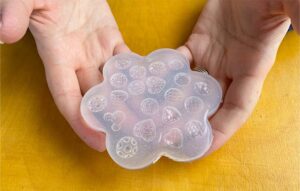When casting with resin or making a mould, you always want to achieve the perfect end result, so you may be wondering what the best way to minimise and remove air bubbles from your projects is. There are two popular methods: using a pressure pot or a vacuum chamber. So, which is better? Let’s compare and contrast the two methods.
Why do bubbles form in liquid silicone and resin?
Bubbles inevitably appear in liquid silicone and resin as air becomes trapped in the material. When you mix the two components of a compound, air bubbles are created and form voids in the final product. This can cause weak spots or other imperfections that can affect your project’s strength, durability, look and performance. Pressurising or vacuuming are two of the best ways to avoid this problem.
What is a pressure pot?
A pressure pot is an airtight cylinder-shaped container that is used to reduce and remove air bubbles in resin as well as during the process of making silicone moulds. It works by using compressed air to force out trapped air bubbles, creating clear and bubble-free plastic parts. This ensures a smooth and bubble-free surface on both silicone moulds and casts made from resin – giving you higher-quality products without any air bubbles ruining them.
Pressure pots can help take the guesswork out of casting, and are ideal when you don’t have access to a vacuum chamber or if the project needs to be completed quickly.
Using a pressure pot can work best with castings that are not too intricate as the pressure cannot reach deep into complex corners or designs.
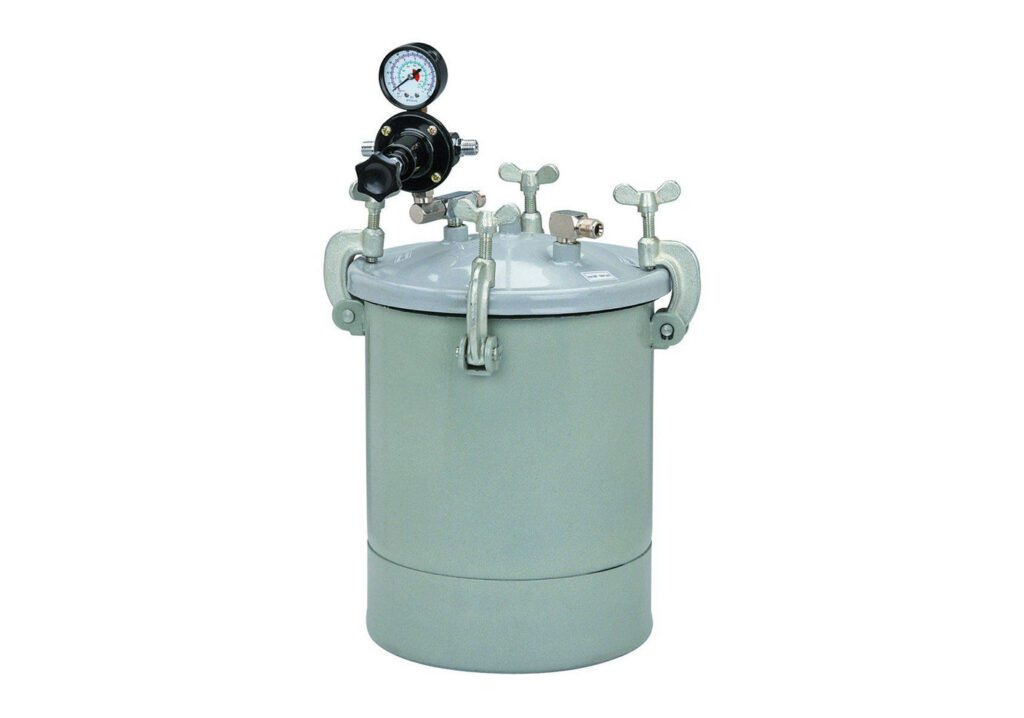
Pressure pot Pro’s and Con’s
Pros
– Easy to use and set up
– Quicker process compared to vacuum chambers
– Ideal for basic or simple designs
Cons
– Not suitable for intricate or complex shapes
– Moulds can warp when too much pressure is applied.
What is a vacuum chamber?
A vacuum chamber is another type of sealed container in which resin and silicone moulds can be effectively produced without the presence of air bubbles. By removing the air from the chamber, resin materials are able to cure evenly as all excess air has been removed, creating an optimal surface finish.
Vacuum chambers are becoming increasingly commonplace among resin artists as they enable them to produce products with professional-level quality and no visible imperfections. This makes them a great tool for resin designers who want to achieve a consistent, outstanding final product.
Additionally vacuum chambers are becoming much more simpler to use. The new Airless bubble machine from Resiners is proving to be one of the best compact and user friendly vacuum chambers on the market.
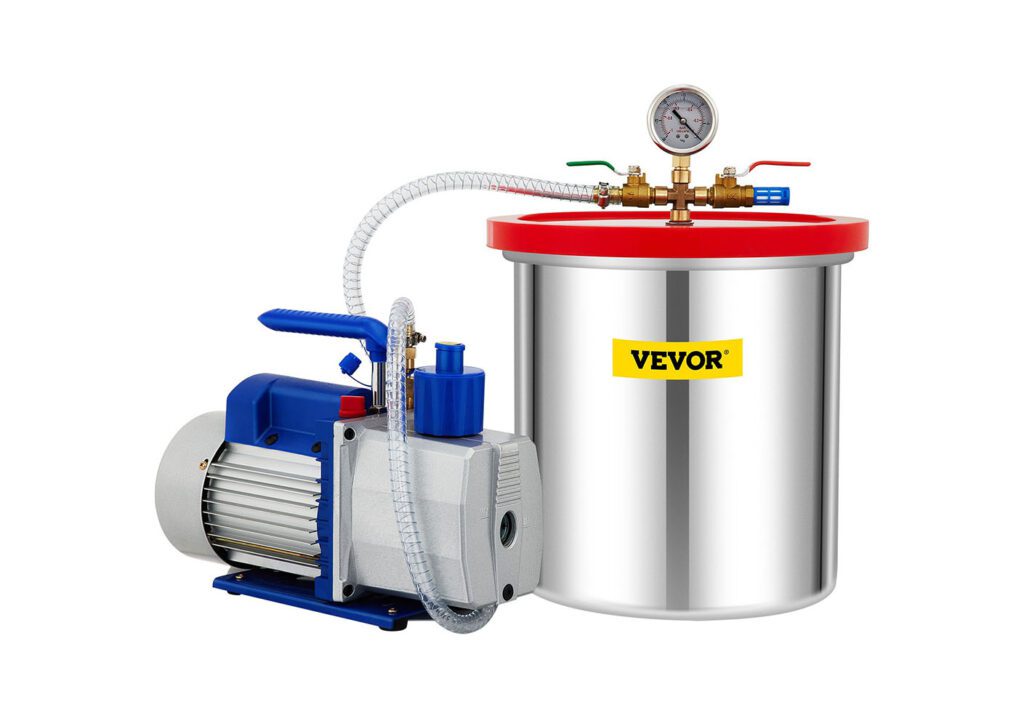
Vacuum chamber Pro’s and Con’s
Pros
– Suitable for intricate or complex shapes
– Evenly cures the material and eliminates air bubbles
– Can be used with various types of casting materials
Cons
– More expensive than pressure pots
– Takes longer to remove air bubbles compared to pressure pots
– Requires more setup time and knowledge of vacuum sealing.
So, which one is better? Pressure Pot or Vacuum Chamber?
Both pressure pots and vacuum chambers are effective methods for removing air bubbles from silicone rubber moulds and resin castings. Pressure pots use air pressure to compress air bubbles out of the mould or resin for an effective and reliable result. On the other hand, vacuums reduce air pressure around your object to push air bubbles out. Each have there own advantages and disadvantages.
Ultimately, it comes down to the details of your project and which method is better suited for that particular project. Pressure pots are great for quick and easy projects with basic designs, while vacuum chambers are ideal for intricate designs or when a professional-looking finish is required
Whichever method you choose, make sure to read the instructions carefully and be aware of any safety procedures. By taking the time to learn about each method and the materials you are working with, you’ll get the best results for your project.

